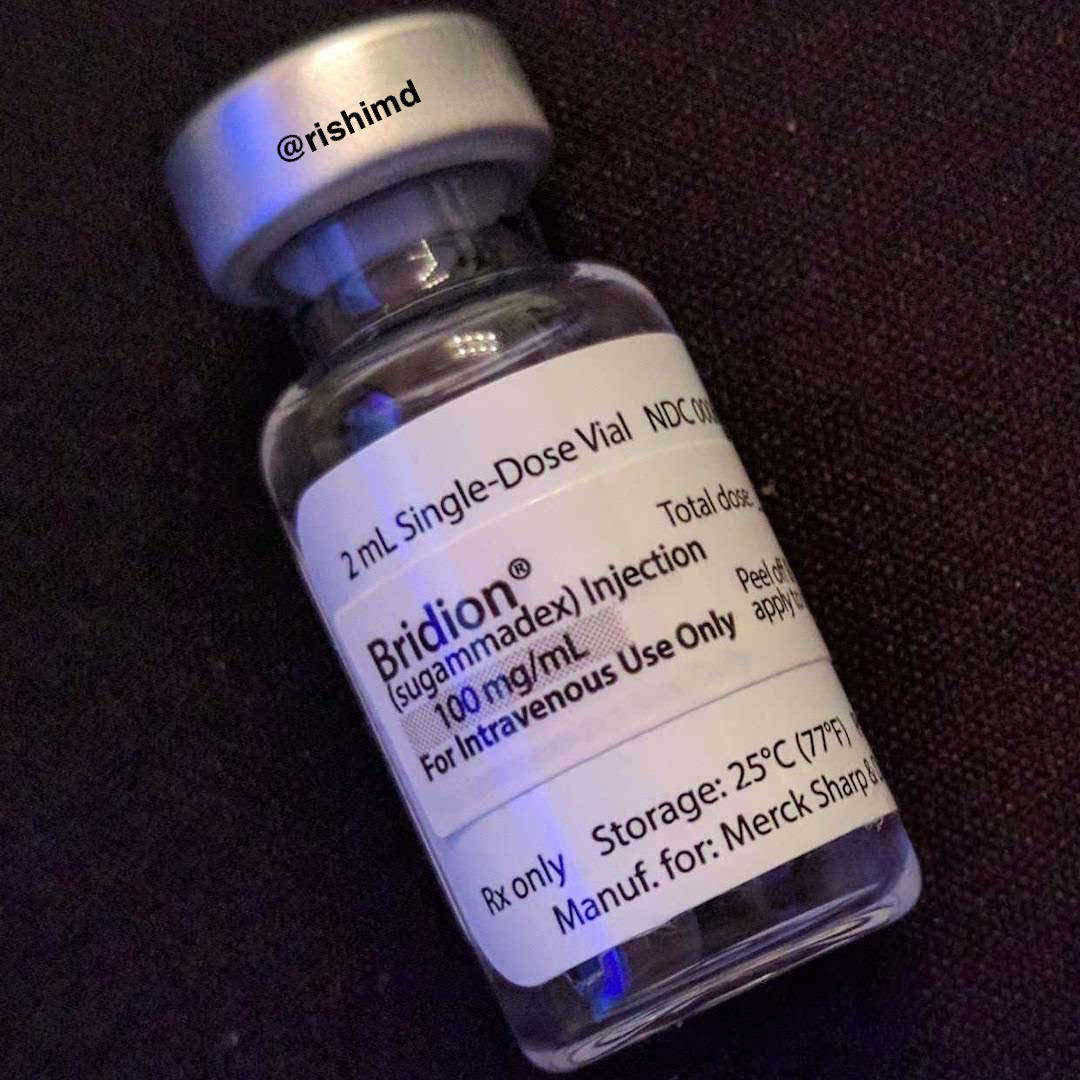Sugammadex (Bridion) is an intravenous reversal agent for rocuronium and vecuronium, two aminosteroid, non-depolarizing neuromuscular junction blockers (NMJBs). It’s a cyclodextrin molecule which encapsulates the NMJB within its core thereby preventing it from binding its normal receptor – the nicotinic acetylcholine receptor at the neuromuscular end plate. Although it failed to receive FDA approval several times due to unresolved hypersensitivity concerns, sugammadex was finally approved in 2015, and I enjoy using it in the OR and ICU.
Sugammadex’s dose depends on the depth of neuromuscular blockade as assessed by a train-of-four (TOF) peripheral nerve stimulation. Sugammadex allows us to safely use rocuronium as a rapid-sequence paralytic in patients who have contraindications to succinylcholine since we can reverse blockade (albeit with a hefty dose) – 16 mg/kg! Cost has often been cited as a reason to avoid sugammadex, but for an average sized patient with resolving neuromuscular blockade (3 or 4 twitches on TOF), a single vial of 200 mg tends to do the trick for the same cost as neostigmine/glycopyrrolate-mediated reversal.
Hormonal contraception may be affected for up to a week after administration, so it’s important to use an alternative means of birth control in that time. Furthermore, sugammadex may affect coagulation tests, but whether or not this translates to an increase in clinically significant bleeding is still up for debate and confounded by many other factors. Due to its novel and “clean” mechanism of action, we don’t have to subject patients to potential side effects of more traditional, acetylcholinesterase inhibitor reversal agents like neostigmine and edrophonium which can cause nausea, bradycardia, and yes, even defecation.
Drop me a comment with questions! 🙂






